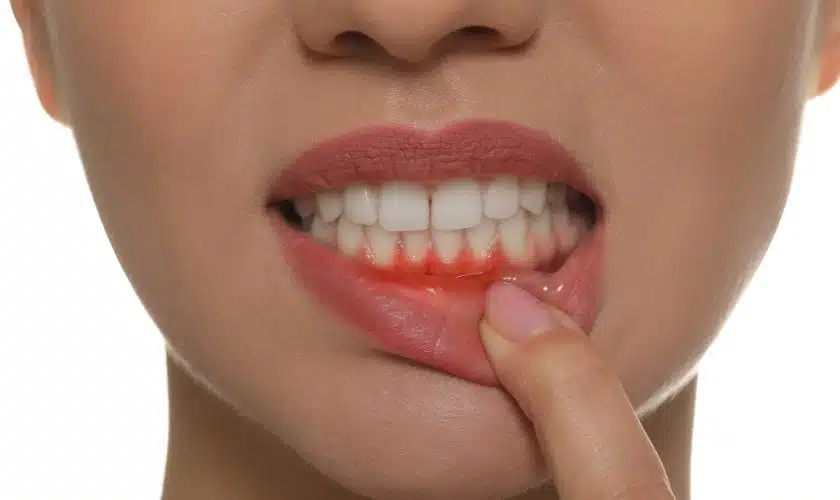Are you experiencing bleeding gums or bad breath? Chances are, you might be suffering from gum disease. But don’t fret just yet because there’s good news: gum disease is treatable! In fact, there are various treatment options available that can help alleviate the symptoms and prevent further damage to your oral health. To guide you on this journey towards healthy gums, we’ve compiled a list of the top 5 gum disease treatment options that you need to know about. So sit tight and get ready to learn more about how you can keep your pearly whites in tip-top shape!
What is Gum Disease
Gum disease is a serious condition that can lead to tooth loss and other health problems. There are two main types of gum disease: gingivitis and periodontitis. Gingivitis is a milder form of gum disease that can be reversed with good oral hygiene. Periodontitis is a more severe form of gum disease that can damage the tissues and bones supporting the teeth. Periodontitis is a chronic condition that requires professional treatment to manage.
If you have gum disease, it’s important to see a dentist or periodontist for an evaluation and to develop a treatment plan. The earlier you start treatment, the better your chances are of reversing or managing the condition.
Types of Gum Disease
There are two main types of gum disease: gingivitis and periodontitis. Gingivitis is the early stage of gum disease and can often be reversed with good oral hygiene. Periodontitis is the more advanced stage of gum disease and requires professional treatment.
Gingivitis is the early stage of gum disease and is characterized by red, swollen, and bleeding gums. Gingivitis is often caused by poor oral hygiene, which allows plaque and tartar to build up on the teeth. Plaque is a sticky film of bacteria that forms on the teeth. Tartar is hardened plaque that can only be removed by a dentist or dental hygienist. Gingivitis can often be reversed with good oral hygiene, including regular brushing, flossing, and mouthwash. If gingivitis is not treated, it can progress to periodontitis.
Periodontitis is the more advanced stage of gum disease and is characterized by damage to the tissues and bones that support the teeth. Periodontitis occurs when plaque and tartar are not removed from the teeth, causing the gums to become inflamed and infected. The inflammation causes the bones and tissues around the teeth to break down. This can eventually lead to tooth loss if not treated properly. Treatment for periodontitis involves deep cleaning below the gum line, antibiotics, and sometimes surgery.
Prevention of Gum Disease
Gum disease is a serious condition that can lead to tooth loss, and it is important to take steps to prevent it. The best way to prevent gum disease is to brush and floss regularly and to see your dentist for regular checkups. If you have any risk factors for gum disease, such as diabetes or smoking, you should be extra diligent in your oral hygiene routine.
There are a few specific things you can do to prevent gum disease:
- Brush twice a day with a soft-bristled toothbrush. Be sure to brush gently, as aggressive brushing can actually damage your gums.
- Floss daily. Be sure to use a gentle flossing motion and avoid forcing the floss between your teeth. If you have trouble flossing, there are special tools available that can make the process easier.
- See your dentist regularly for checkups and cleanings. Your dentist will be able to spot early signs of gum disease and can help you keep your mouth healthy.
5 Effective Treatment Options
There are a variety of effective treatment options available for gum disease, depending on the severity of the condition. For mild gum disease, a good oral hygiene routine including regular brushing and flossing is often enough to control the infection and prevent further damage. More severe cases may require deeper cleanings by a dentist or periodontist, as well as prescription mouthwashes or antibiotics. In advanced stages, surgery may be necessary to restore damaged tissue and bone.
No matter what stage of gum disease you are in, it is important to seek treatment as soon as possible to prevent the condition from progressing and causing more serious problems. If you think you may have gum disease, make an appointment with your dentist to discuss your symptoms and develop a treatment plan that is right for you.
Scaling and Root Planning
If you’re suffering from gum disease, it’s important to know that there are treatment options available to help you improve your oral health. One of the most common treatments for gum disease is scaling and root planning.
Scaling and root planning is a procedure that involves removing tartar and plaque from your teeth and gums. The procedure is usually performed by a dentist or periodontist and may require multiple visits. During the procedure, your dentist will use special instruments to clean below the gum line and smooth out any rough spots on your teeth. This helps to remove bacteria and irritants that can cause gum disease.
After scaling and root planning, it’s important to practice good oral hygiene habits at home to help keep your gums healthy. This includes brushing twice a day, flossing daily, and using mouthwash. You should also see your dentist regularly for checkups and cleanings.
If you have severe gum disease, you may need additional treatment in addition to scaling and root planing. This could include surgery, antibiotics, or other therapies. Your dentist will work with you to create a treatment plan that is right for you based on the severity of your condition.
Antibiotics
Antibiotics are the most common treatment for gum disease. They can be taken by mouth or applied directly to the gums. Common antibiotics used to treat gum disease include tetracycline, amoxicillin, and metronidazole. Antibiotics work by killing the bacteria that cause gum disease.
Surgery
Some of the most common surgical procedures used to treat gum disease include pocket reduction surgery, flap surgery, soft tissue grafts, and bone grafts. Pocket reduction surgery is used to remove plaque and tartar from the pockets around your teeth so that your gums can reattach to your teeth. Flap surgery is used to lift up the gum tissue so that plaque and tartar can be removed from the roots of your teeth. Soft tissue grafts are used to replace lost gum tissue, and bone grafts are used to replace lost bone tissue.
Laser Treatment
Laser treatment for gum disease is becoming increasingly popular. This minimally invasive treatment option can be used to treat both gingivitis and periodontitis. Laser therapy can help to reduce inflammation, remove bacteria, and promote healing. It is important to note that laser treatment is not a cure for gum disease, but it can help to control the progression of the disease and improve your overall oral health.
Periodontal Maintenance
Periodontal maintenance is a type of preventive dentistry that is used to clean teeth below the gum line and prevent the progression of periodontal disease. This type of cleaning is typically done every three to six months, depending on the severity of the individual’s periodontal disease. Periodontal maintenance is important because it can remove plaque and tartar buildup that can lead to inflammation and infection of the gums. It can also help to prevent bone loss and tooth loss associated with periodontal disease.
Conclusion
Gum disease is a serious issue that can lead to tooth loss if not properly treated. The good news is, there is a wide range of treatment options available to help combat gum disease and maintain your oral health. We hope this article has helped you gain insight into the five most common treatments for gum disease: scaling and root planning, antibiotics, laser therapy, periodontal surgery, and regular brushing and flossing. If you suspect you may have gum disease, it’s important to speak with your dentist as soon as possible so they can determine the correct treatment plan for you.
FAQs
If you’re like most people, you probably have a lot of questions about gum disease and how to treat it. Here are some of the most frequently asked questions about gum disease treatment:
Q. What are the symptoms of gum disease?
A. The early stages of gum disease may not have any symptoms. As the disease progresses, you may notice bleeding when you brush or floss your teeth, or redness and swelling of your gums. You may also notice that your teeth are starting to become loose. If you experience any of these symptoms, it’s important to see a dentist so that you can start treatment before the condition gets worse.
Q. How is gum disease diagnosed?
A. Your dentist will examine your mouth for signs of gum disease, such as bleeding gums or tartar buildup on your teeth. They may also take X-rays to check for bone loss around your teeth.

